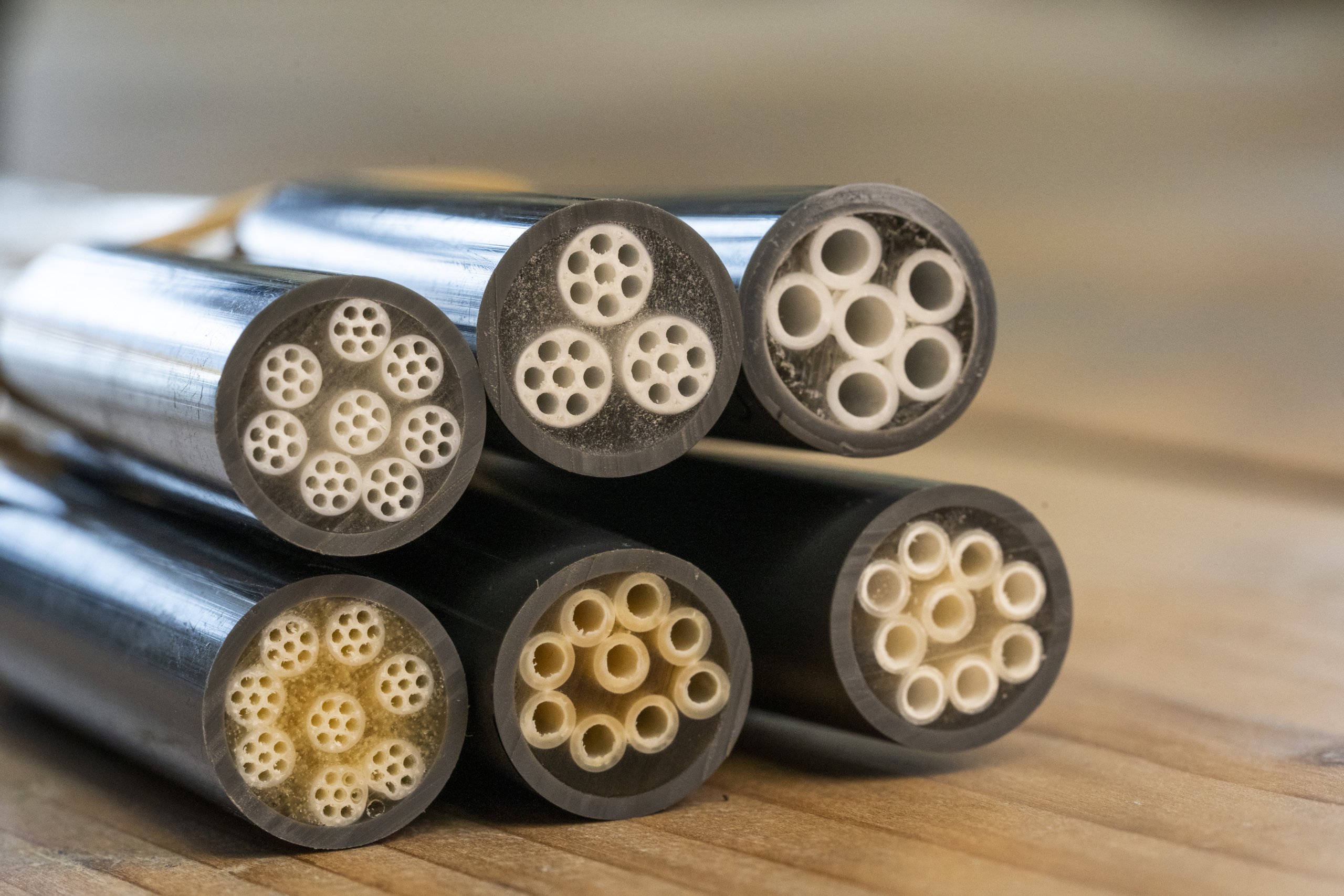
At PB we often get the question ‘Your filter traps 99.9999% of bacteria, but what about the one in a million that gets through? An interesting question, which we answer in this article! We will also tell you more about what LOG reduction is and how you can use our filtration techniques to ensure that you can always provide your guests or customers with clean and safe water.
What is LOG reduction?
LOG reduction is a term we use to describe the degree of capture and/or killing of all forms of microorganisms (microbes), including pathogens. The word ‘LOG’ is an abbreviation of the word ‘logarithm’, which indicates how many times a number must be multiplied by itself to obtain another number. By comparing the quality of the filtered water (permeate side) with the feed water, we determine the LOG reduction factor. A reduction value of 5 LOG then means a reduction factor of 10 to the power of five (105). A reduction factor of 105 corresponds to a 99.999% reduction of all microorganisms in the water.
The table below shows the reduction number, reduction factor and reduction percentage for each LOG:
| LOG reduction | Reduction factor | Reduction percentage |
| 1 | 10 | 90% |
| 2 | 100 | 99% |
| 3 | 1.000 | 99,9% |
| 4 | 10.000 | 99,99% |
| 5 | 100.000 | 99,999% |
| 6 | 1.000.000 | 99,9999% |
From 3 LOG we talk about disinfection, from this point the microbe level is no longer harmful to people. PB filters capture 99.9999% of bacteria, which is equivalent to a reduction of LOG 6, or sterilisation. We define sterilisation as ‘the elimination of all forms of microbiological life’. Complete elimination is difficult to demonstrate, so we define sterilisation by a number.
What are pathogens?
Pathogens are disease-causing micro-organisms. Examples of these pathogens are E-coli and Legionella. Microbiological pathogens that are active in water can make people very ill if not (properly) filtered. So there is every reason to filter these pathogens out of your water.
Calculate LOG reduction
We express the reduction values of the microbes on a logarithmic scale. With a logarithmic scale, we place increments of 10 at equal intervals on a scale. In this way, it is not the numerical value of the quantity that is given, but the logarithm of the quantity with respect to a reference value. This allows you to place both very small and very large numbers.
LOG reduction in practice
Membrane filtration is ideal for removing bacteria, microplastics and particles such as Legionella from your water, but how does it work in practice?
Step 1
The retention, or tenacity, of a filter is tested by growing a bacterium, such as Legionella, on it.
Step 2
The number of colony forming units (bacteria) per litre or millilitre of liquid is then measured in LOG units.
Step 3
The liquid containing the bacteria is forced through the filter, leaving colony-forming units in the filter.
Step 4
The liquid that has passed through the filter is called permeate water. We also measure the permeate water in LOG units, after which the difference in LOG units (reduction percentage) between the feed water and the permeate water is determined.
Step 5
In the end, the reduction rate reflects the degree of reduction of colony forming units from the water and you have calculated the LOG reduction of the filter.
Calculate your own LOG reduction
Do you want to calculate the LOG reduction factor yourself? Use the formula below:
Calculation example
Since we are never talking about 0 Cfu/l, but <100 Cfu/l, for example, the construction is as follows
Measured on supply: 6,500,000. Cfu/L = 6 log
Measured on permeate: <10 Cfu/L = 1 log
Reduction: 6 log – 1 log = 5 log
Or calculate using the formula above:
Reduction = (1-(10/6500000)) * 100% = 99.9998461 = >99.999% = >5 log
Ultrafiltration and LOG reduction
PB is committed to providing clean and safe drinking water through ultrafiltration. We use ultrafiltration to filter out all the small undissolved particles, such as bacteria and viruses, from the water. The inside of the membrane acts as a very fine sieve with a pore size of 0.015 to 0.03 µm. Water is forced through these pores at a pressure of around 2 bar. Going one step further than reverse osmosis, harmful dissolved substances are also filtered out of the water.
Parameter improvement with PB filters
Ultrafiltration is suitable for improving various parameters depending on the nutritional quality of the water. Below is the full list of suitable applications:
-
- Viruses: 4 LOG reduction;
-
- Bacteria: 6 LOG reduction (In Dutch drinking water, the membrane filter is often used for the removal of Legionella, Pseudomonas and E-coli bacteria);
-
- Removal of oxidised iron;
-
- TSS (turbidity) < 0.1 NTU (TSS and turbidity are different quantities. TSS are countable particles in PPM);
-
- Reduction of SDI (Sludge Density Index) value < 2
High LOG reduction with PB filters
Ensure clean and safe drinking water for your customers, guests and colleagues with a PB Legionella filter with the highest achievable LOG reduction factor of 6 LOG. Our filters meet stringent quality requirements and are therefore KIWA BRL K14010-1 certified.
At PB we have an extensive standard range, but we also like to be challenged with specific problems. Finding the best solution to your challenge is our strength!


